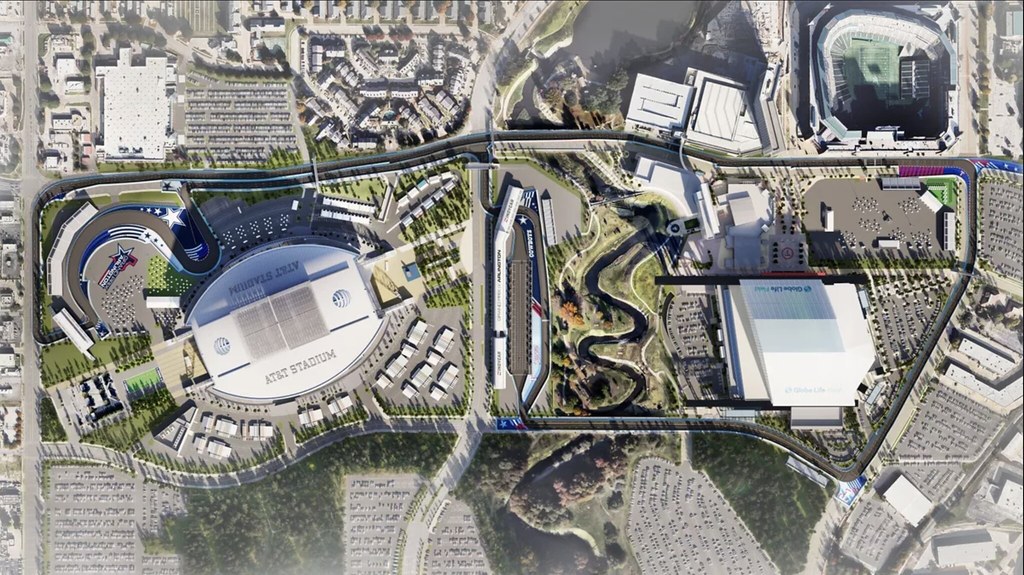The Arlington Grand Prix, scheduled for 2026, will mark the debut of a new street circuit in IndyCar. Designed by Tony Cotman, the urban layout will span 2.73 miles and feature 14 turns, combining long straights and technical sections that will challenge both drivers and teams.
Circuit Layout
The future track will be temporarily situated between two major sports venues: the AT&T Stadium, home of the Dallas Cowboys, and Globe Life Field, home of the Texas Rangers. During the event, the circuit will run around these facilities, providing a visually appealing setting for both live spectators and those following the race remotely.
0.9-Mile Main Straight
One of the key elements will be the nearly one-mile-long main straight, where the cars will exceed 180 mph. This stretch will be crucial for overtaking, as drivers will face heavy braking to enter Turn 10, a tight right-hand corner demanding precise control.
Turns and Braking Zones
Throughout the course, several key overtaking areas have been identified, particularly in Turns 1, 12, and 14. Turn 10, following the longest straight, will be one of the most demanding braking zones on the circuit. In contrast, Turn 6, shaped like a horseshoe, will require technical handling, offering a change of pace midway through the lap.
Fast and Technical Sections
In addition to slow, technical areas, the track will feature a fast corner leading into the main straight, adding complexity to the aerodynamic setup. Teams will need to balance the need for speed on the straights with control through the technical sections of the course.
Design and Special Features of the Circuit
The temporary Arlington layout will also include some unique features that set it apart from other street circuits. Among these will be a double-sided pit lane, similar to the one used in Detroit, which will streamline pit stops during the race. Additionally, there will be two sections where cars will pass beneath hospitality areas, offering fans a close-up experience of the action.

INDYCAR penalizes Andretti Global and PREMA Racing for technical violations at Indianapolis
Colton Herta and Marcus Ericsson among those affected by technical regulation violations

Alex Palou makes history by winning the Indianapolis 500 Miles
Becomes the first driver from his country to win the most prestigious race in U.S. motorsport

Team Penske dismisses top management just days before the Indianapolis 500
After multiple penalties and illegal modifications, Roger Penske makes structural changes ahead of Indianapolis 500 Mile race

INDYCAR imposes severe penalties on Team Penske for illegal modifications
Newgarden's and Power's cars will start from the last positions in the Indy 500
2025-06-15
15:00
2025-06-22
15:30
2025-07-06
14:00







